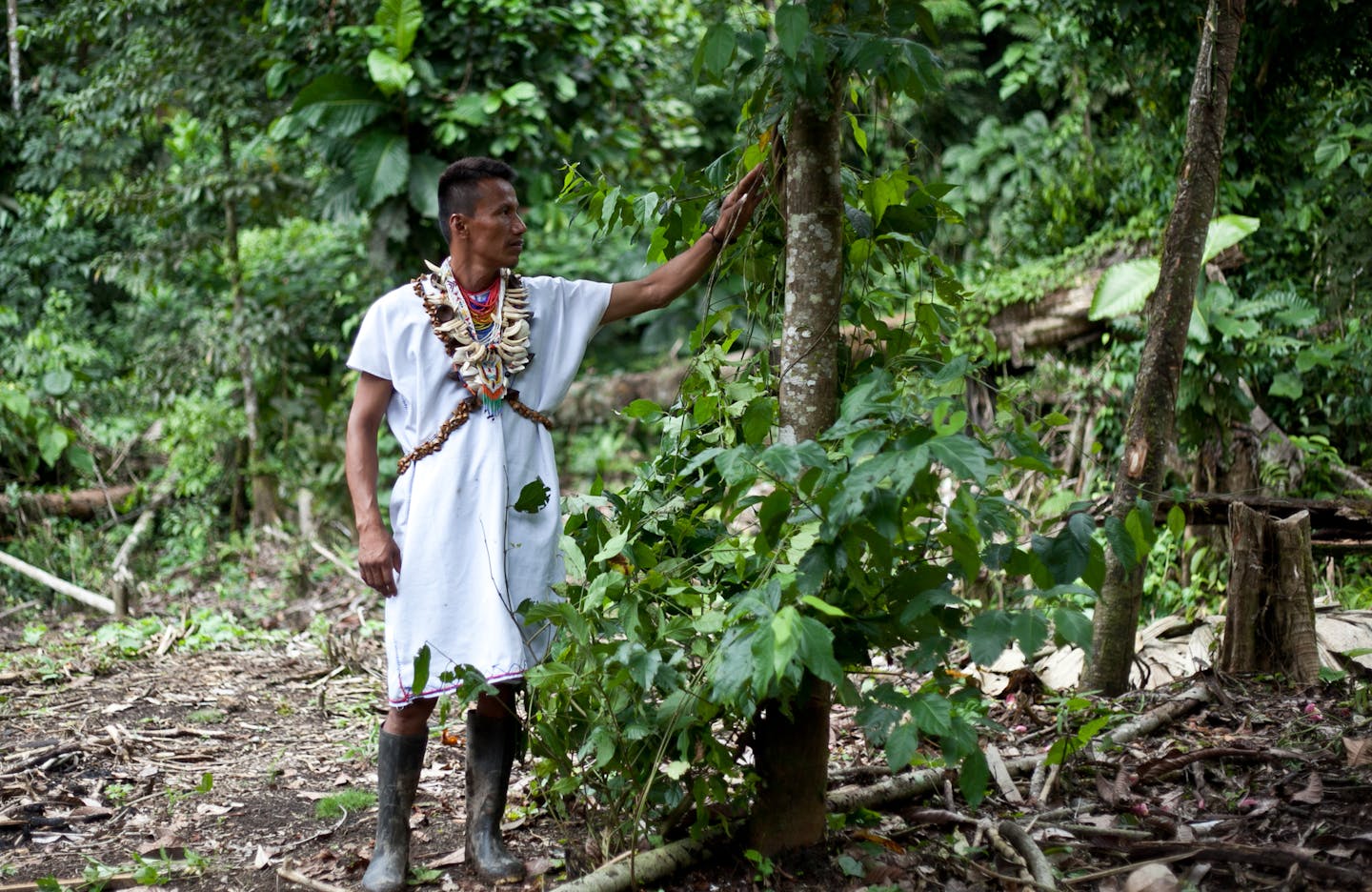Preserving nature does not require human displacement
Response to “Protecting half of the planet could directly affect over one billion people” by Schleicher et al. (2019) from the authors of “A Global Deal For Nature: Guiding principles, milestones, and targets” by Dinerstein et al. (2019): Carly Vynne, Julie Cajune, Eric Dinerstein, Jonathan Baillie, Sanjiv Fernando, Anup Joshi, Andy Lee, David Olson, Enric Sala, Eric Wikramanayake, Harvey Locke.
In their paper, Judith Schleicher et al. suggest that protecting half the Earth – to save nature, mitigate climate change, and create a livable biosphere – would directly impact more than one billion people1. It would not. Schleicher et al.’s conclusions are based on several fundamental errors in assumptions, methodology, and use of the wrong data sets, which leads to misleading conclusions. Furthermore, they missed the most important point: that not protecting approximately half the Earth will negatively affect the 7.8 billion people alive today and the 10 billion people within this century who depend now, or will rely in perpetuity, on the biodiversity and ecosystem services nature provides.
Multiple studies have established that maintaining the diversity and abundance of life on Earth and essential ecosystem services will indeed require increased conservation attention approximating half the Earth 2–7. A new climate model reinforces the related goal of halting habitat loss and preventing land-based emissions (i.e., protecting land and ocean carbon sinks as a necessary prerequisite, along with a rapid transition to renewable energy solutions, to avoid climate breakdown) 8,9. Schleicher et al.’s analysis skips over the climate and biodiversity science and instead focuses on the social impacts of protecting half of each terrestrial ecoregion based on Dinerstein et al.’s ecoregion-based approach4 and Global Deal for Nature9. Unfortunately, their critique of protecting half the planet uses rationales contrary to what we state in our papers.
The erroneous conclusion that 1 billion people would be displaced is based on three fundamental errors in Schleicher et al.’s assumptions and methodology:
1) Schleicher et al. claim that our papers call for achieving half protected within every ecoregion on Earth. We never state in either paper that each of the Earth’s 846 terrestrial ecoregions should be 50% protected. This is especially true for the 207 ecoregions listed as Nature Imperiled, defined as “ecoregions where the sum of the amount of natural habitat remaining and the amount of the total ecoregion that is protected is less than or equal to 20% (averaging only 4% total habitat remaining)”4. Rather, we state that protecting half is neither feasible nor desirable in ecoregions where extensive agriculture feeds humanity (page 535)4.
2) Schleicher et al.’s use of an alternative ‘remaining habitat’ layer as the basis for analysis. The authors overlay the entire extent of an ecoregion with a population density map to estimate the number of people who might be affected by protecting half. They then use the human footprint map10, rather than our remaining habitat layer, to anticipate the ecoregions where it may be more feasible to protect half. Because our categories—which they use as a basis for analysis—were based on actual remaining habitat and not the human footprint, a better comparison would have been to use the same dataset we employed available from us, or by following methods detailed in Appendix S2 of Dinerstein et al4. Our data layer relies on the most widely used tree cover maps for forest biomes11 and anthromes12 for non-forest biomes to calculate remaining habitat by ecoregion. In our 2017 and 2019 papers, cities, towns, and metropolitan areas are excluded in the spatial analysis before identifying where habitat remains outside protected areas that could be proposed for increased conservation attention. Hence, the claim that our approach could change the status of the greater London metropolitan area, or any other metropolitan area for that matter, as indicated by Schleicher et al. in Fig. 1, is not credibly linked to our findings.
3) Assuming a global target should be accompanied by a prescriptive approach to conservation. We have called for protecting half the Earth based on both Indigenous knowledge and biodiversity and climate science. Efforts such as Dinerstein et al.4, Pimm et al.13, Allan et al.5 and others analyze how to conserve life on Earth under scenarios of increased protection of nature. None of these global scale analyses are, however, top-down prescriptive in method to achieve enhanced conservation. Nature conservation areas are designated by civil society at local, regional, or national levels using a myriad of approaches14. Additionally, we state that protecting nature across the 846 terrestrial ecoregions does not mean excluding people from their lands. In contrast, we also highlight examples where local and Indigenous people have chosen both to protect half and include themselves as part of the nature conservation solution in places such as in Bhutan, Namibia, Nepal, and Canada4. There are over 100 ecoregions where >50% protected exists and more are approaching 50%, and Locke14, Dinerstein et al.9, and others identify where community-based conservation contributes to protecting half, strategies designed and carried out by local participants.
Because the Schleicher et al. scenario interprets the 50% target as applying to each of the world’s 844 terrestrial ecoregions, their approach finds a massive potential for human displacement. In the scenario proposed by Dinerstein et al. (GSN), the extent of land to be protected is dependent upon remaining habitat, rather than the total area of each ecoregion. In India, for example, Schleicher et al. assume 50% protection of each of India's 20 major ecoregions, totaling 1.6 million km2. If enacted, this approach would result in the displacement of hundreds of millions of people. In contrast, the GSN model starts with a geospatial inventory of all remaining unprotected natural lands in the region, avoiding areas of human settlement. According to the GSN, India has retained just 12.3% of its natural land, so protecting these areas would avoid human displacement. A side-by-side comparison of the two models (Figure 1) starkly contrasts the difference between these approaches.

Figure 1. Dinerstein et al. (left) versus Schleicher et al. (right). In three Asia regions (circled in red), the Schleicher model proposes large areas of human displacement (green to purple areas on the map, right). The ‘Global Safety Net’ model explicitly excludes densely populated land and land designated for agricultural use (black areas on the map, left).
Importantly, Schleicher et al. neglect the mounting evidence that if we fail to rapidly scale nature conservation measures, 10 billion people—not 1 billion—will be substantially and negatively affected. Climate disruption, loss of ecosystem services, and extinctions of species will severely limit access to food and places we can live, and affect mental and physical health of everyone. How many billions of lives will be disrupted by the increasing wildfires, storms, droughts, and the refugee crisis that will increase if climate change is not mitigated in a timely manner?
The biodiversity and climate science are only two of the pillars underpinning Nature Needs Half. The third foundation was born, in part, out of Indigenous wisdom. As one of our co-authors explains,
Indeed, we should listen to the youth movement today to sense the injustice future generations will experience if we fail to respond by enacting big solutions now.
To address the interlinked climate and extinction crises requires new strategies. Protecting half is such a bold solution, but also a positive paradigm. It provides a path forward that along with a clean energy transition will be challenging to achieve but is more sustainable and hopeful than our current course. Perhaps it is tempting to write critiques tearing down a ‘simple and grand’ goal of protecting half. Instead, we call upon Schleicher et al. and others to work towards facilitating solutions at regional and local scales that incorporate environmental, economic, and social considerations. Large-scale nature protection, stabilizing the climate, and saving life on Earth requires everyone, and we all need a livable biosphere. If we are successful, the outcome will mean a more equitable and desirable life for billions more people to come.
References
1. Schleicher, J. et al. Protecting half of the planet could directly affect over one billion people. Nat. Sustain. (2019). doi:10.1038/s41893-019-0423-y
2. Noss, R. F. et al. Bolder Thinking for Conservation. Conserv. Biol. 26, 1–4 (2012).
3. O’Leary, B. C. et al. Effective Coverage Targets for Ocean Protection. Conserv. Lett. 00, 1–6 (2016).
4. Dinerstein, E. et al. An Ecoregion-Based Approach to Protecting Half the Terrestrial Realm. BioScience 67, (2017).
5. Allan, J. R. et al. Conservation attention necessary across at least 44% of Earth’s terrestrial area to safeguard biodiversity. bioRxiv (2019). doi:10.1101/839977
6. Woodley, S., Bhola, N., Maney, C. & Locke, H. Area-based conservation beyond 2020- a global survey of conservation scientists. 25, (2019).
7. Woodley, S. et al. A review of evidence for area ‐ based conservation targets for the post ‐ 2020 global biodiversity framework. Parks 25, 31–46 (2020).
8. Teske, S. Achieving the paris climate agreement goals: Global and regional 100% renewable energy scenarios with non-energy GHG pathways for +1.5°C and +2°C. Achieving the Paris Climate Agreement Goals: Global and Regional 100% Renewable Energy Scenarios with Non-Energy GHG Pathways for +1.5C and +2C (2019). doi:10.1007/978-3-030-05843-2
9. Dinerstein, E. et al. A Global Deal For Nature: Guiding principles, milestones, and targets. Sci. Adv 5, (2019).
10. Venter, O. et al. Sixteen years of change in the global terrestrial human footprint and implications for biodiversity conservation. Nat. Commun. 7, 12558 (2016).
11. Hansen, M. C. et al. High-resolution global maps of 21st-century forest cover change. Science (80-. ). (2013). doi:10.1126/science.1244693
12. Ellis, E. C., Goldewijk, K. K., Siebert, S., Lightman, D. & Ramankutty, N. Anthropogenic transformation of the biomes, 1700 to 2000. Glob. Ecol. Biogeogr. 19, 589–606 (2010).
13. Pimm, S. L., Jenkins, C. N. & Li, B. V. How to protect half of earth to ensure it protects sufficient biodiversity. Sci. Adv. (2018). doi:10.1126/sciadv.aat2616
14. Locke, H. The International Movement to Protect Half the World: Origins, Scientific Foundations, and Policy Implications. in Reference Module in Earth Systems and Environmental Sciences (2018). doi:10.1016/b978-0-12-409548-9.10868-1




